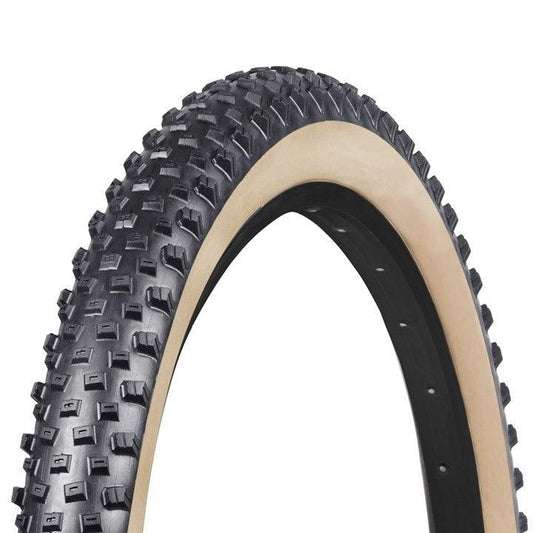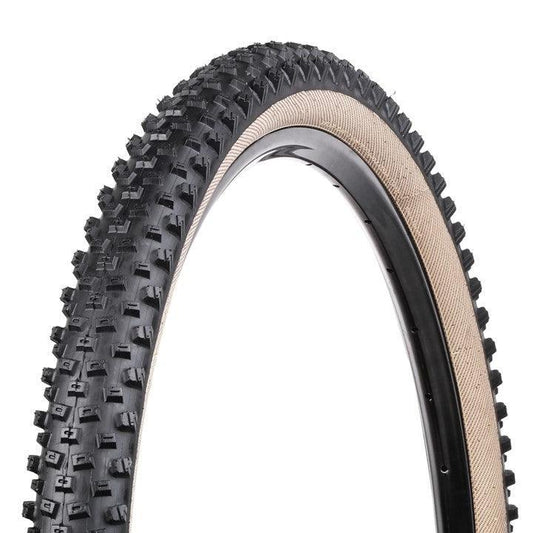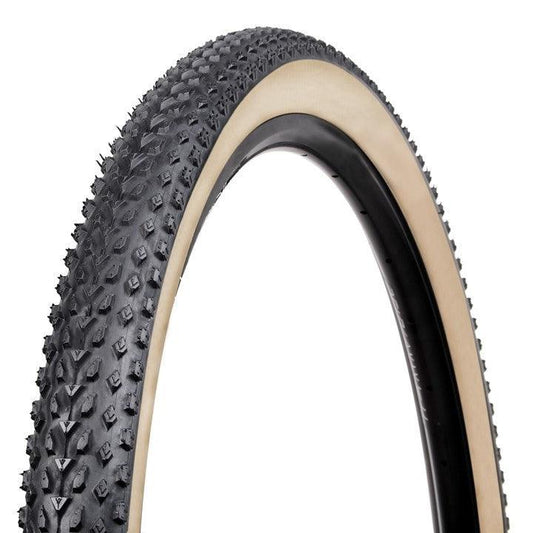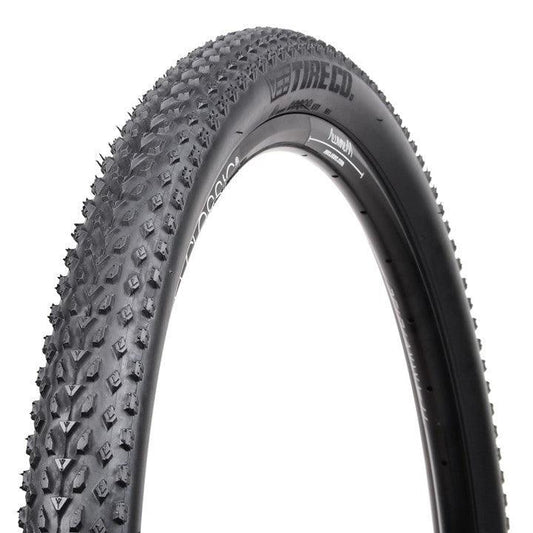Seven tips for the perfect MTB tire
Some people pay little attention to them, but tires are one of the most important components on a bicycle. The tire is the contact piece between the driver and the ground. They transmit braking forces, acceleration energy and changes of direction over a small area, about the size of a postcard. You usually don't even notice a good tire. A bad tire, on the other hand, not only leads to a lack of safety in bad weather conditions, but also often leads to a negative change in the handling of the bike.
We'll tell you what you need to consider when choosing the right tire besides the brand 😉.
- The size
In addition to the tire size in inches (e.g. 27.5 inches), the tire width is also crucial, as the rim, fork and/or rear triangle limit the selection. The tire size is stated either in inches (27.5 x 2.35) or in ETRTO (e.g. 60-584, European Tire and Rim Standard, European Tire and R in the T echnical Organization ). The ETRTO size designation indicates the width (60 mm) and the inner diameter of the tire (584 mm) - a clear designation that can be used to clearly assign the rim size.
The customs information, on the other hand, is not so clear and clear. 26 inches can be assigned different diameters depending on the type of bike (diameter 559 mm MTB, 571 mm triathlon and 590 mm Dutch touring bikes).
Customs details are more common in MTB sports, which is why they are also stated on all tires.
The inside diameter of the tire and the shoulder diameter of the rim must match so that the tire sits correctly on the rim - a tire with the ETRTO 37-622 fits, for example. B. on a rim 622 x 19C.
The tire width and the inner rim width must also match.
- profile
The profile determines the traction and rolling resistance. Therefore, city/trekking bikes usually have a more closed profile, as these are more advantageous on asphalt or other solid surfaces than MTB tires with an open profile.
These in turn excel on soft, loose surfaces. But here too, you have to pay attention to what and how you drive. In downhill/enduro sports, the cleats are larger and often more free-standing than in cross-country sports.
For SUV bikes, the MTB tires are designed so that the center profile appears more closed, while the outer lugs are free-standing to offer the best possible grip on terrain, especially in curves, while experiencing little rolling resistance on road surfaces.
- The mixture
Or compound. As a rule, different rubber materials are mixed together in order to reconcile the different properties of a tire, which often compete, and to find an optimal compromise. These properties are rolling resistance, grip, downforce and durability.
We use e.g. For example, our Dual Control Compound has a harder compound on the tread to ensure less rolling resistance and more durability and a softer compound on the side knobs to provide good grip in corners.
If you have two different tire models on the front and rear wheels, then the rear tire should always have the harder rubber compound.
- The carcass
When it comes to the tire casing, the casing, you will read information like 72 TPI (or EPI, Ends per Inch, Threads per Inch). This indicates the density of the carcass fabric. We offer casings from 24 up to 120 TPI.
The higher the TPI number, the tighter the mesh and higher quality a casing is. Finer casings offer lower rolling resistance and provide better puncture protection (more on that later). A 67 TPI carcass is considered the optimal compromise between low weight and greater robustness.
- The breakdown protection
As previously indicated, the carcass plays an important role. Higher thread count casings (higher TPI/EPI count) are harder to puncture. However, from a TPI number of around 127, the threads are too fine and therefore no longer as stable.
A puncture protection belt, we call it B-Proof, under the tread provides greater puncture protection. A rubber/aramid belt with a thickness of 3 or 5 mm is used here. This lies between the tread and the tube and therefore protects against a puncture, i.e. a puncture.
For some people it is also worth considering an insert, such as: B. the Mefo bicycle mousse.
- The air pressure
Occasionally, customers complain that tires become cracked. This is usually due to insufficient air pressure when storing the bike, because air pressure also plays a role here. If the tires are flat for months, the tire material is stressed and cracks form.
But of course the pressure is also crucial for driving behavior, which is why the air pressure should be checked regularly and corrected if necessary. If the pressure is too high, the tire will literally jump; if the pressure is too low, it will flex. The risk of a breakdown is also higher if the air pressure is too low. It is particularly important for sporty drivers to find out the right air pressure for their own driving behavior. Recommendations can be found on the tire sidewall.
Bluetooth tire pressure monitoring systems such as the AIRsistant , as we know them from cars, are now also entering the market. They are a worthwhile addition so that you can always travel optimally.
- Tube or tubeless
A question of philosophy. The hose can be easily replaced if it is broken, but you always have to have a replacement with you when touring.
Tubeless installation is a bit more complex and some people swear when changing the sealant. Tubeless tires offer less rolling resistance, higher grip and more puncture protection. Mountain bikers often ride tubeless without having to fear a “snakebite” in the tube, where the tube is damaged if the rim flanges puncture.
Ultimately, everyone has to decide for themselves whether they want to ride tubeless or tubeless. Like everything in life, both options have their advantages and disadvantages.
If you don't know which tire is right for you, you can contact us at any time. Our friendly staff will provide you with competent support when purchasing your new tires!
MTB Trail - XC
-
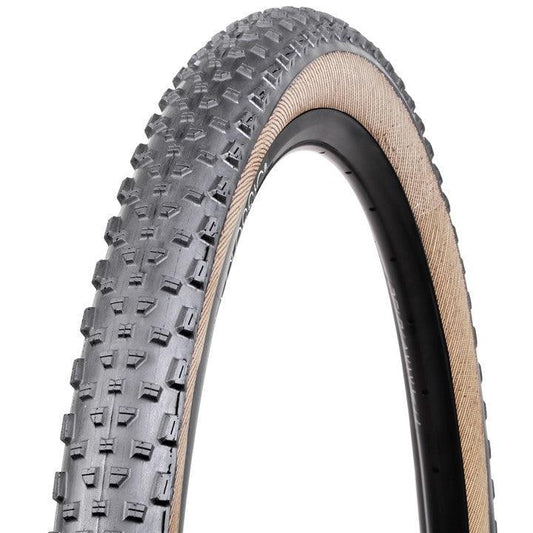
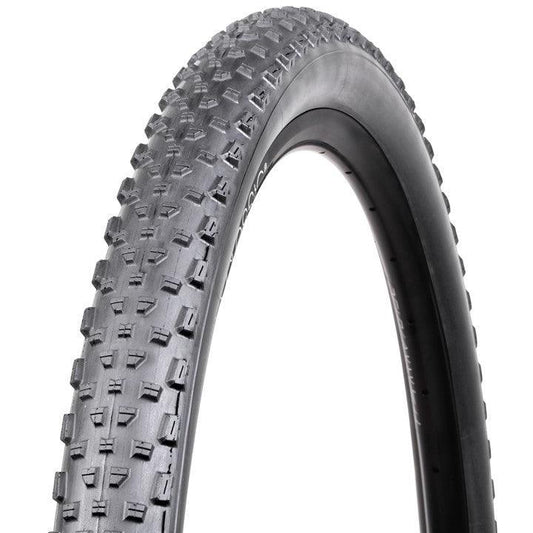 Sale
SaleRAIL ROCCO
5.0 / 5.0
(1) 1 total reviews
Regular price €29,95 EURRegular priceUnit price / per€49,95 EURSale price €29,95 EURSale -
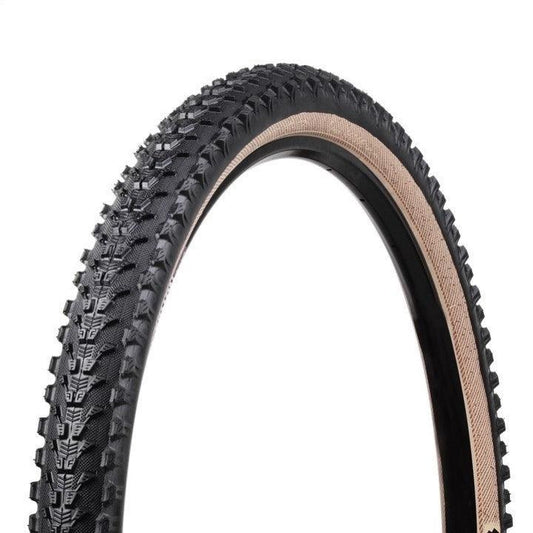
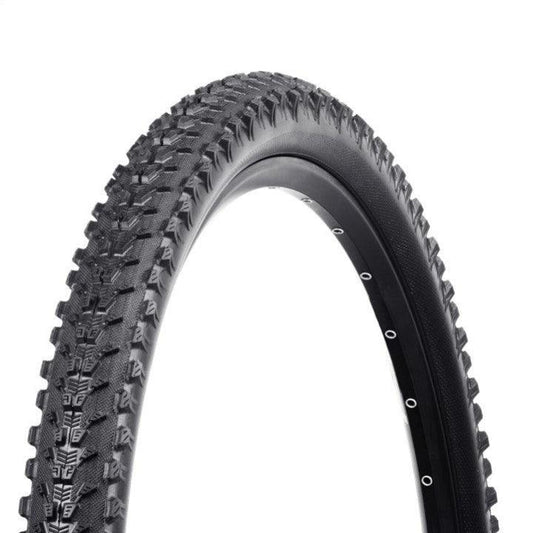 Sale
SaleRAIL ESCAPE
5.0 / 5.0
(2) 2 total reviews
Regular price €31,95 EURRegular priceUnit price / per€49,95 EURSale price €31,95 EURSale
